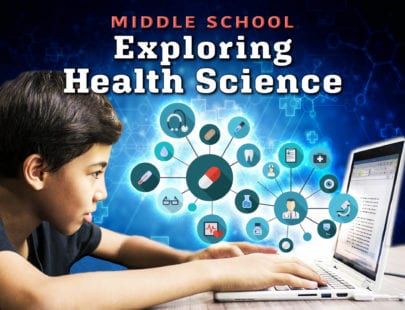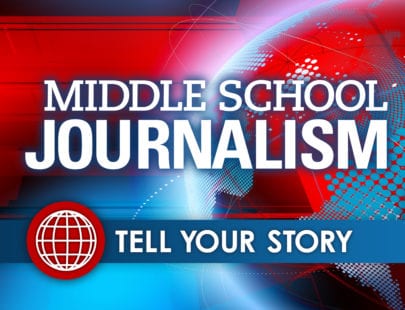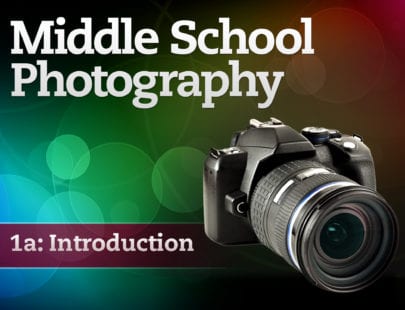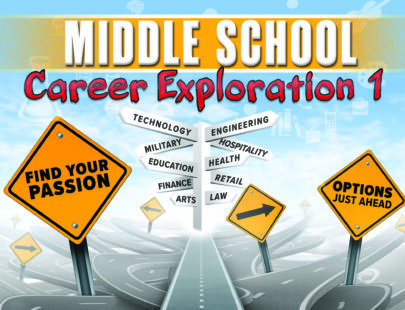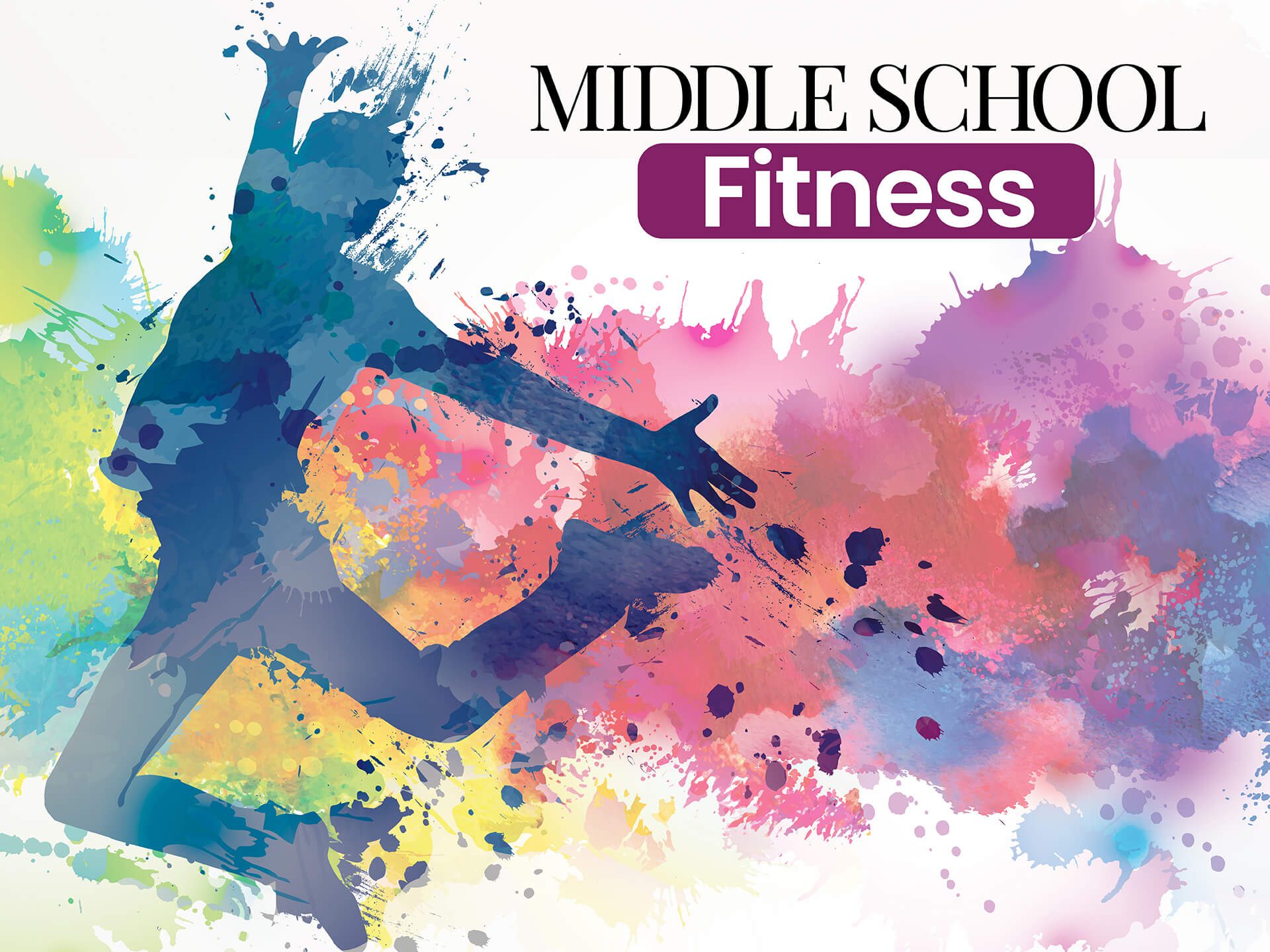
Middle School Fitness
Physical fitness is important for all ages, and middle school is the perfect time to discover activities that you enjoy and develop good fitness habits. In this course, you will measure your baseline fitness, set fitness goals, and check in with your progress at various times throughout the course. You’ll learn the fundamentals of activities like dance and gymnastics, soccer, football, basketball, volleyball, baseball/softball, and more. You’ll also learn how to power your body through macronutrients and develop an exercise plan that can grow with you as you change and evolve. Let’s get started building the healthiest you!
Units at a Glance
Unit 1: Let’s Get Moving!
Do you love to run? Swim? Jump rope? Rock climb? No matter what activity you prefer, being active is a lifelong journey, and starting your journey now is what matters! Understanding why you’re exercising is just as important as knowing how to exercise safely. How you treat others is an important piece of that puzzle as well. There’s no time like the present! So let’s get started finding out where your fitness is right now (don’t worry—there’s always time for improvement!) and thinking about how to get moving in a way that’s exciting for you, respectful of others, and safe for all. Ready to go?
After studying this unit, you will be able to:
- Complete a baseline fitness assessment
- Identify a variety of warm-up and cool-down exercises
- Apply concepts of sportsmanship when participating in physical activities
- Describe ways to improve your physical fitness
Unit 2: Beating, Breathing, and Moving!
Now that you’re moving, let’s keep it that way! Understanding how your heart and lungs power your workouts will help you make sure that you’re getting a good workout and that the workout isn’t getting the best of you. Let’s learn how to tell if you’re working out in your target heart rate zone and explore some fun rhythmic exercises you can do to make the most of the physical and mental benefits of exercise.
After studying this unit, you will be able to:
- Determine your Target Heart Rate Zone (THRZ) and understand why it is important
- Modify the intensity of your workouts in order to stay in your THRZ
- Describe anaerobic and aerobic activities and how they are different
- Demonstrate movement patterns and movement skills with rhythmic activities
Unit 3: Keeping You on Track
Most children learn to run by the age of two and to jump by the age of three. This gives kids two great building blocks to explore more movements and even play some sports! As you continue working on your own personal fitness, you’ll have the chance to practice these skills and many more in different sports environments. If you combine these with knowledge about how your body works and with the principles of sports and fitness, you could be unstoppable!
After studying this unit, you will be able to:
- Explain how to improve the skill-related components of fitness
- Use skill-related components of fitness to improve cardiorespiratory endurance, muscular strength and endurance, flexibility, and body composition
- Describe the FITT (frequency, intensity, time, type) principle and how it improves fitness in relation to aerobic and anaerobic activities
- Create a practice plan
- Demonstrate a variety of sports movements including dribbling, kicking, punting, and jumping
- Utilize skills like catching, hand dribbling, volleying, and hitting to play sports like basketball, volleyball, baseball, and softball
Unit 4: Game Changers: Strategy and Communication
Did you know that in baseball, it is usually the catcher who “calls the shots”? They communicate to the pitcher what kind of pitch to throw to each batter. How do they know which pitches to choose? The coach typically signals the pitch to the catcher. Strategies like this play a big part in sports and game play, but they won’t amount to much without solid communication. Let’s learn about how to choose strategies and tactics in a game, and how to see those through to the win by communicating well with teammates, coaches, and even opponents.
After studying this unit, you will be able to:
- Explain the difference between strategies and tactics when it comes to game play
- Discuss offensive and defensive strategies for specific sports
- Demonstrate different social and emotional health skills when it comes to communicating with and accepting differences in others
- Describe how to handle conflict in socially acceptable ways during sports or games
- Compare and contrast positive and negative peer pressure
Unit 5: Fueling Up and Keeping Cool
Did you know that about 58 percent of your body is made up of water?[1] It’s amazing that our bodies aren’t just a giant puddle! Water and some key macronutrients (carbohydrates, fats, and proteins) keep your body running at the optimal speed and temperature. So, let’s learn about what your body requires to keep up with your daily activities, which includes all the physical activities you’ve been practicing!
After studying this unit, you will be able to:
- Discuss macronutrients, including carbohydrates, fats, and proteins
- Explain what calories are and how they play a role in fueling different individuals
- Describe how temperature and humidity affect hydration and how to spot heat-related illnesses
- Apply safety precautions for outdoor sports
Unit 6: Fitness For a Lifetime
You have been on a fitness adventure! You’ve learned about different activities and types of workouts. You’ve practiced all kinds of sports and various safety measures. Now, you might be wondering, what’s left? In this final unit, you will develop skills to be a wise consumer of fitness goods, discover fitness opportunities in your community, and learn how to set SMART goals for yourself. By setting goals for exercise and using technology to plan and track your workouts, you can create good habits to set you up for success in fitness and in life. Let’s do this!
After studying this unit, you will be able to:
- Distinguish fact from fiction in advertisements for health and wellness products and programs
- Discuss opportunities to participate in new physical activities in your community
- Set customized SMART goals based on your fitness level, resources, and interests
- Create an exercise plan to help you meet your goals and use technological tools to track your progress toward your goals
Required Materials
Physical
- Baseball
- Basketball
- Bat
- Football
- Jump-rope
- Mat or towel
- Safety props (helmet, hat, knee pads, etc.)
- Soccer ball (or other large ball to dribble)
- Timer or stopwatch
- Volleyball
- Writing materials
- Yard stick
Software
- Word processing software
Other
- Music of your choice
Optional
- Art supplies
- Audio recording device
- Digital calendar
- Digital camera
- Posterboard
- Presentation software
- Video recording device
